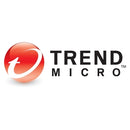Description
Meet the TippingPoint QSFP28 Module, a high-performance 100Gbe LR4 Xcvr designed for security-forward networks where speed, protection, and reliability must work in harmony. This advanced QSFP28 transceiver enables rapid data transfer while delivering robust protection for critical infrastructure. Whether you’re upgrading a data center, expanding a security appliance fleet, or building a scalable core network, the TippingPoint QSFP28 Module is engineered to meet demanding throughput requirements without compromising security or manageability. Built for enterprise-grade resilience, it integrates seamlessly with security-centric networks and traditional data paths alike, supporting dense, high-bandwidth uplinks essential for modern data centers, campuses, and security operations centers. Its straightforward installation, minimal downtime, and energy-efficient operation make it a dependable choice for organizations balancing raw throughput with robust security capabilities.
- Ultra-high throughput for dense uplinks - The QSFP28 form factor delivers 100G-class uplinks in a compact, high-density footprint, enabling scalable spine/leaf architectures and security fabrics without sacrificing performance. By consolidating multiple lanes into a single, pluggable module, you gain substantial port density suited for backbone connectivity, multi-tenant environments, and security workflows that demand sustained high-speed data movement.
- Low latency with uninterrupted security processing - Optimized for minimal packet processing delay, this transceiver supports sustained throughput while security appliances perform threat prevention, traffic inspection, and policy enforcement in real time. The LR4 design minimizes serialization and optical overhead, helping to maintain tight latency budgets even under heavy load and complex inspection tasks.
- Seamless security integration - Built to work with TippingPoint security ecosystems, the module ensures that advanced threat prevention, IPS/IDS capabilities, and application controls stay in sync with network traffic. It supports dense, high-bandwidth uplinks in environments where security policies must scale alongside data growth, enabling unified management across security and network layers without adding complexity.
- Easy deployment and maintenance - A hot-swappable QSFP28 interface simplifies installation and reduces downtime. Designed for straightforward replacement and routine maintenance, it lowers mean time to repair (MTTR) and streamlines lifecycle management in busy data centers or security contexts. Compatibility with standard 100G-class uplink ports and familiar rack workflows means less guesswork during deployment.
- Energy-efficient design for sustained uptime - Engineered for efficient power usage and reliable thermal performance, the module supports continuous threat prevention and resource-intensive inspection tasks without pushing power consumption or cooling needs beyond what a modern data center can handle. This efficiency is particularly valuable in security-centric networks where uptime and performance are non-negotiable.
Technical Details of TippingPoint QSFP28 Module
Form factor: QSFP28 module designed for high-density deployments and compatible with devices supporting 100G-class uplinks.
Data rate: Targeted at 100G-class performance in typical deployments; exact rate depends on SKU and configuration.
Interface: QSFP28 hot-pluggable interface with multi-lane channelization suitable for 4x25G configurations and flexible lane utilization.
Compatibility: Designed to integrate with TippingPoint security appliances and other network devices that support QSFP28 optical modules and 100G Ethernet standards.
Heat and power: Optimized for energy-conscious operation and reliable thermal performance; specifics depend on deployment and SKU.
How to Install TippingPoint QSFP28 Module
Step 1: Verify compatibility. Ensure your device supports QSFP28 and 100G-class uplinks, and confirm firmware or software support for TippingPoint optics.
Step 2: Prepare for installation. Follow standard ESD precautions and your data center’s hot-swapping guidelines. If required, schedule a maintenance window to minimize impact.
Step 3: Insert the module. With the system either powered down or according to your hot-swapping procedure, align the QSFP28 connector with the port and firmly insert until seated. Confirm a secure fit and retainment as applicable.
Step 4: Verify operation. Power up (if needed) and check link indicators. Confirm that the link negotiates to the expected speed and that both ends of the connection are stable.
Step 5: Configure and validate. Use the device management interface to confirm optical parameters if necessary (wavelength, rate alignment, and lane configuration). Run a test to verify throughput and ensure security inspection paths are active and functioning as intended.
Frequently Asked Questions
- What is the TippingPoint QSFP28 Module used for? - It provides high-density 100G uplinks in a QSFP28 form factor, designed to integrate with TippingPoint security appliances and other 100G Ethernet devices to support fast, secure data transfer.
- Is this a hot-swappable transceiver? - Yes. The QSFP28 module is designed for hot-swappable deployment with minimal downtime, aligning with enterprise and data center operational best practices.
- What does LR4 refer to? - LR4 denotes the long-range, four-lane optical transceiver configuration capable of delivering 4x25G within a single QSFP28 module, suitable for multi-lane aggregation and high-speed uplinks.
- What environments is it suitable for? - Data centers, security operation centers, campuses, and enterprise networks requiring high-throughput uplinks while maintaining security processing and policy enforcement.
- Can I use this module with non-TippingPoint devices? - It is designed to integrate with devices that support QSFP28 optical modules and 100G Ethernet standards; compatibility with non-TippingPoint devices depends on vendor support and hardware compatibility.
- Does it incur extra power consumption? - The module is engineered for energy-efficient operation, but exact power usage varies by SKU, deployment, and traffic load.
Customer reviews
Showing - Of Reviews


